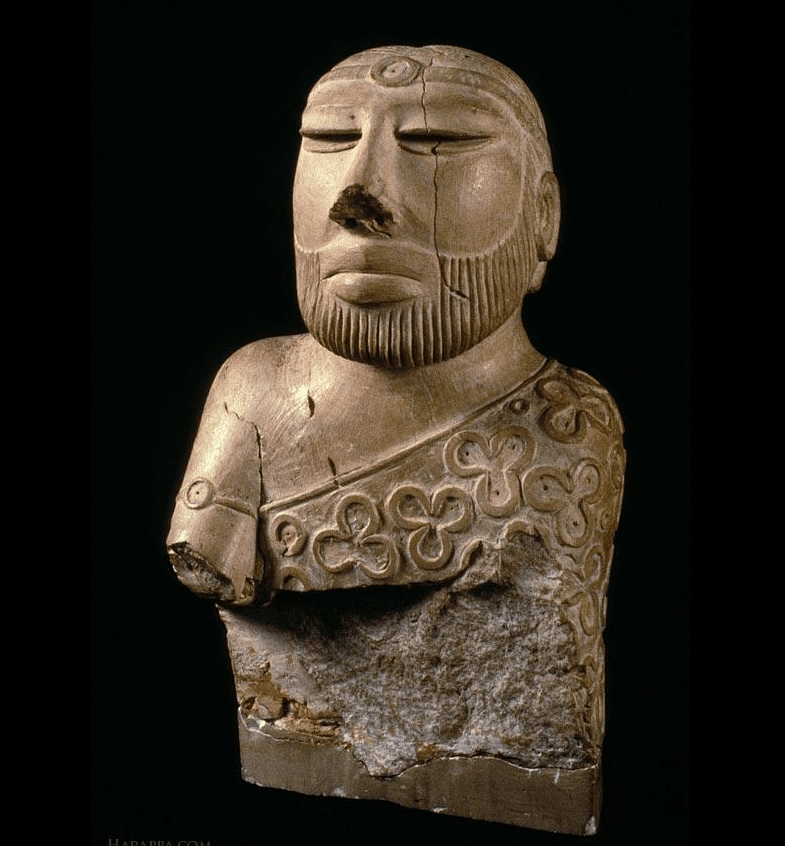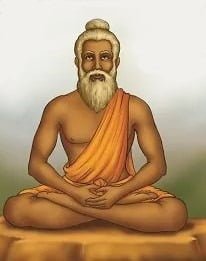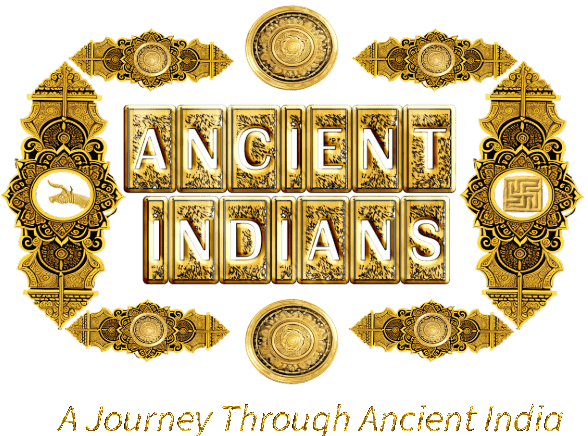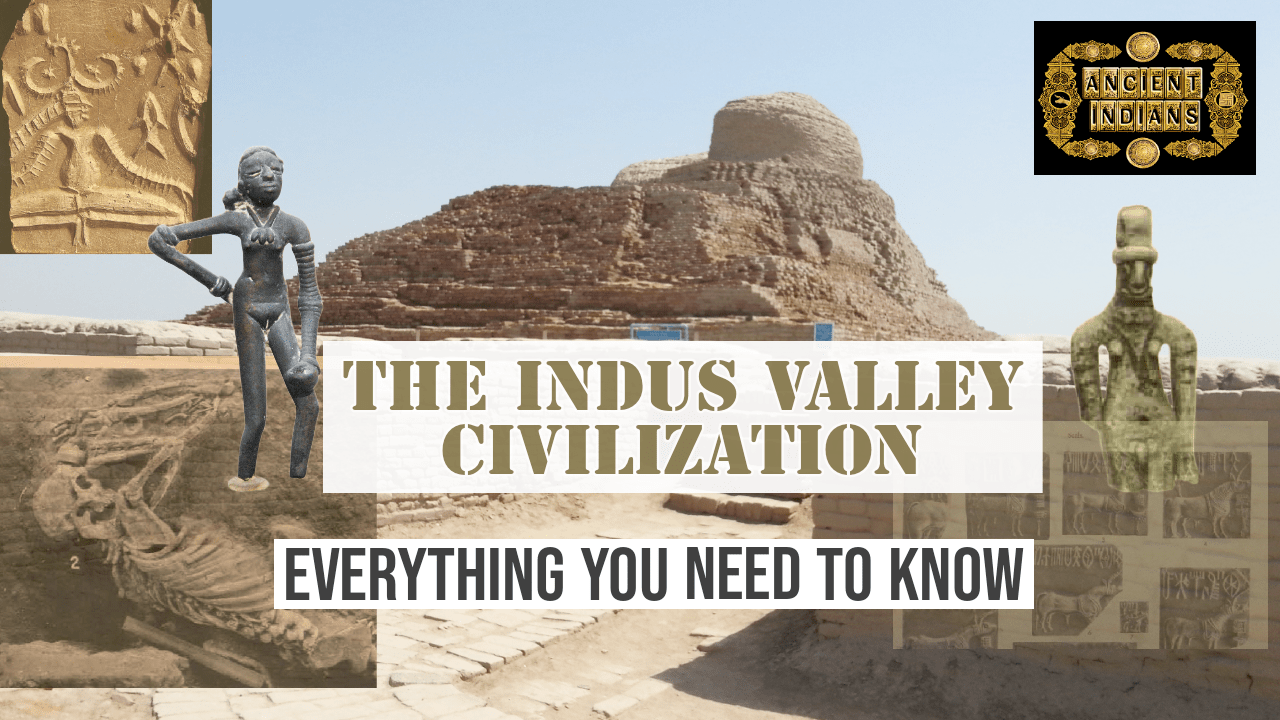
This steatite statue of a bearded male has become the face of the Indus Valley Civilization. Dubbed the Priest King, it was discovered in Mohenjo Daro in 1925, buried at a depth of 1.37 meters by the archaeologist Kashinath Narayan Dikshit in the DK area of the city. Found in one of the passages below the floor of a room, considered to be a hammam or a bath, archaeologists believed it probably rolled in there when the walls collapsed.
Description of the Priest King Statue

The statue, measuring 6.9 inches by 4.3 inches, shows the Priest King adorned with a band featuring a circular inlay ornament on his forehead, tied with a knot at the back. A similar band adorns his right arm.
Although the tip of his nose is missing, his eyes have deep incisions that suggest they may have once held inlay.
Draped over his right shoulder is a shawl intricately decorated with trefoil, double-circle, and single-circle designs, initially filled with red pigment.
While the statue’s right arm is absent below the elbow, the left arm rests tucked under the shawl. Regrettably, the lower half of the statue is missing. Observations of male statues excavated nearby suggest he may have been seated in a yogic position
A possible seating position of the Priest King

The hair and beard on his face are well represented by the combed lines, but such lines are missing on the mustache, suggesting that perhaps the statue was incomplete.
Also, the smooth slant at the lower top of the back of his head is a flat surface without hair, indicating that maybe it was meant to be the location of a more elaborate headgear.
Why It Was Called the Priest King
In ancient times, only individuals with great authority and power, such as priests and kings, were immortalized in the form of a statue.
Also, John Marshall, the then chief of the Archaeological Survey of India, mistakenly believed that the Indus Civilization was a part of the Mesopotamian civilization because of the existence of seals and other artifacts from the Indus Valley Civilization at various locations in the area that constituted ancient Mesopotamia.

Priest-Kings were known to exist in Mesopotamia, 1and therefore Marshall believed that this statue, in all probability, belonged to a king-priest of Mohenjo Daro.
However, it was likely his successor, Mortimer Wheeler, who first used the title “Priest King” for the statue.
The Mystery of the Priest King of Mohenjo Daro
The Priest King of Mohenjo Daro remains shrouded in mystery. Speculations galore with what or who the statue represented: a king, a priest, a priest-king, or some other high official of Mohenjo Daro?
When an assistant of Marshall pointed out that the eyes of the statue appear to be focused on the tip of his nose(a yogic meditation practice), Marshall connected this with his observation of the Pashupati seal, where the central figure, seated in a yogic position, appears to be focusing on the tip of his nose as well, further strengthening the spiritual and religious connotation attributed to the statue.

Indeed, the statue reminds one of ancient Indian Rishis (enlightened and knowledgeable beings) who are depicted as seated in deep meditation. Such Rishis were known to guide and advise kings in ancient Indian culture, and even the kings bowed to them.
Indus Valley Civilization scholar Srinivasan Kalyanaraman has identified the Priest King as a Vedic Priest called Potr (or purifier in English) by studying the symbols and decorations on the statue. He adds that Soma Yajna rituals described in the Vedic texts may be metaphorical accounts of metallurgical processes and the Priest King statue represents an individual or a class of individuals engaged in the smelting of mineral ores. 2

Ancient Indians does not endorse or reject this view.
While ritual fire altars were discovered at the Indus Civilization site of Kalibangan, such fire altars are absent at Mohenjo Daro.
The general view amongst scholars remains that the Vedic religion did not exist in the Indus Valley Civilization; it came after the demise of the Indus Valley Civilization
Was the Priest King of Mohenjo Daro An Actual Person?
If the statue represented an actual person, and he was the king, or priest, or priest king of Mohenjo Daro, it seems odd that there would only be one small statue of him lying under the floor of a peculiar building they called a hammam, or a bath.
Some archaeologists believed the Priest King was one of many fallen subjects who had their statues broken and defaced after they lost their prestige.
Maybe the statue was of a spiritual guru, not as mighty as some priest king, but someone who attracted people with his teachings and techniques on yoga and meditation, as we see in India today.

(Source: Aveda Corporation)
It’s a country where we always see spiritual and religious figures attracting huge crowds.3 He probably had this custom statue made of himself.
The possibilities are endless, and one can only speculate. Like many other aspects of the Indus Valley Civilization, its social structure is also a mystery, and this small statue seems to have raised more questions than it has answered.
Where is the Priest King Now?

The original statue was exhibited in London at the Exhibition of the Art of India at the Burlington Fine Arts Club in 1931.
In 1972, during the Shimla Agreement between Pakistan and India, Indian Prime Minister Indira Gandhi handed over the statue to Zulfiqar Ali Bhutto, the President of Pakistan, as a goodwill gesture.4
A replica of the Priest-King statue is on display at the National Museum in Pakistan. Along with the English description, the Urdu description of the Priest King reads حاکم اعلی (Hakim Aala)(an Urdu-Persian-Arabic expression), which translates to “Supreme Ruler” in English. No one knows where the original statue is. 5
Other Notable Information
- Some scholars propose that since the Priest King sculpture shares artistic similarities with artifacts from the BMAC culture, situated farther north, there is a possibility that the statue was either imported from the BMAC region or crafted by BMAC artisans within the Indus Valley Civilization.
- The shawl draped on the Priest King is believed to be an Ajrak.
- There are speculations on social media that identify the Priest King as a Buddhist priest.
Reference List
- https://www.britannica.com/topic/sacred-kingship/The-king-as-priest-and-seer ↩︎
- https://www.academia.edu/33086862/Mohenjo_daro_Priest_statue_is_R_gveda_Potr_purifier_priest_Indus_Script_dh%C4%81va%E1%B8%8D_smelter_pdf?sm=b ↩︎
- https://www.vice.com/en/article/k7a859/india-obsessed-with-godmen-and-cults ↩︎
- https://en.wikipedia.org/wiki/Simla_Agreement ↩︎
- https://www.harappa.com/slide/national-museum-pakistan ↩︎














